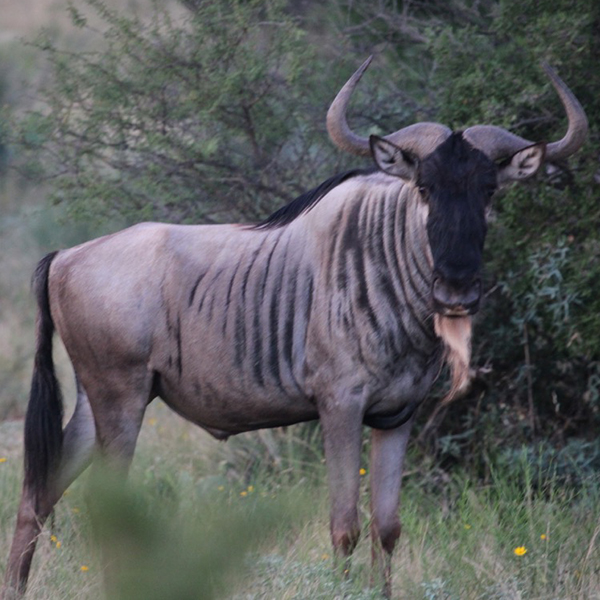X
White-bearded Wildebeest
There is no other antelope like the wildebeest. It looks like it was assembled from spare parts - the forequarters could have come from an ox, the hindquarters from an antelope, and the mane and tail from a horse. The antics of the territorial bulls during breeding season have earned them the name "clowns of the savanna". The species that forms the large herds of the Serengetis-Mara ecosystem of Tanzania and Kenya is variously known as the brindled, blue- or white-bearded gnu. Scientists do, however, make a distinction and list the blue as a separate race restricted to southern Tanzania. The wildebeest described here is the white-bearded of southern Kenya and northern Tanzania. The head of the wildebeest is large and box-like. Both males and females have curving horns, that are close together at the base, but curve outward, inward and slightly backward. The body looks disproportionate, as the front end is heavily built, the hindquarters slender and the legs spindly. The wildebeest is gray with darker vertical stripes that look almost black from a distance. This species has a dark mane and a long tail. Newborns are a yellowish-brown, but change to adult color at about 2 months.
$10,000
Key Facts
Region:
Africa
Weight:
325-600
Gestation Period:
8.5 months
Number of Young:
1
Maximum Age:
20 years
Antlers/Horns:
Male & Female
Season:
Year Round
Book A Hunt

